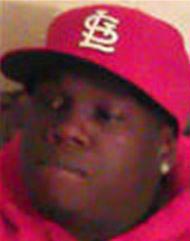LOUIS, (Reuters) – St. Louis police in riot gear broke up a protest that turned rowdy last night with property damage including broken storefront windows, ordering protesters to disperse and detaining several people including news photographers.
Demonstrators gathered for the third straight night to protest the acquittal of former St. Louis police officer Jason Stockley, 36, of first-degree murder in the 2011 shooting death of Anthony Lamar Smith, 24.
As it had on Friday and Saturday nights, the protest started peacefully but turned rowdy and chaotic after dark. Demonstrators broke windows and attempted to block a ramp to an interstate highway, police and witnesses said.
“This is no longer a peaceful protest,” St. Louis police said on Twitter, adding that one officer was injured.

“Police continue to make arrests after property damage in Downtown #STL,” another tweet said.
Officers in riot gear marched through the streets. Others in large vehicles ordered people to leave over a loud speaker.
Police ordered a group of news photographers to stand up against a wall. One of them who posted the incident live on Facebook was placed in handcuffs when his video cut out.
Earlier in the evening, a handful of demonstrators threw bottles in response to a police officer making arrests, the first indication that the protest could turn violent as it did the previous two nights.
“Agitators are breaking multiple windows at Olive & 10th. Officers are heading to scene,” police tweeted.
Hundreds of protesters gathered for the third night in a row in the Missouri city of almost 320,000 people. The violence evoked memories of the riots following the 2014 shooting of a black teenager by a white officer in nearby Ferguson, Missouri.
The protests began shortly after the acquittal on Friday, when 33 people were arrested and 10 officers injured, police said.
Violence flared anew on Saturday night when about 100 protesters, some holding bats or hammers, shattered windows and skirmished with police who were in riot gear, resulting in at least nine arrests.
More serious clashes broke out in 2014 in Ferguson, a suburb of St. Louis, following the killing of 18-year-old Michael Brown by a white police officer who was not indicted.
The Ferguson protests gave rise to Black Lives Matter, a movement that has staged protests across the United States.
An informal group known as the Ferguson frontline has organized the protests, focusing on what it describes as institutional racism that has allowed police to be cleared of criminal wrongdoing in several shootings of unarmed black men.
“Windows can be replaced. Lives can’t,” said Missy Gunn, a member of Ferguson frontline and mother of three children including a college-age son. She said she feared for him every night.
As activists marched through central St. Louis, drummers set the beat for the chant: “If we don’t get no justice, y’all don’t get no peace.”
Demonstrators also called out: “Anthony Lamar Smith” and later lay down in front of police headquarters, simulating death in a “die-in.”
Smith was shot in his car after Stockley and his partner chased him following what authorities said was a drug deal. Prosecutors argued that Stockley planted a weapon in Smith’s car, but the judge believed the gun belonged to Smith.





